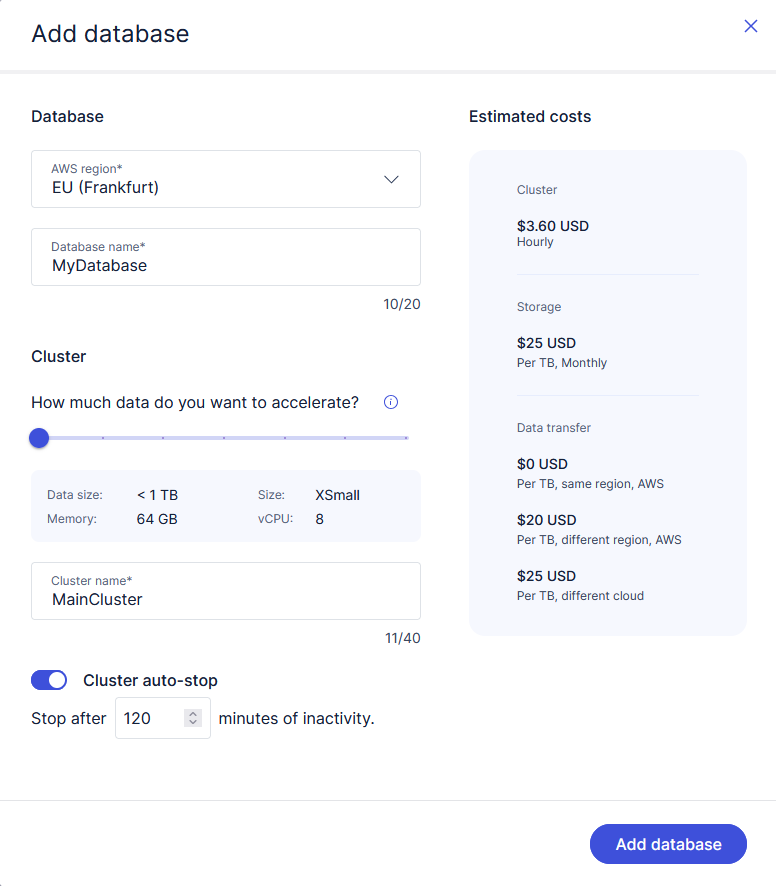First steps in Exasol SaaS
This article explains how to sign up for an Exasol SaaS trial and create your first database.
Sign up
To get started with Exasol SaaS, sign up for a free trial account on https://cloud.exasol.com/signup. You will then receive a verification email to finish setting up your account and create a secure password. After setting up your account, you will receive another email with your account details and can sign in.
When you log in to your Exasol SaaS environment, your user account is assigned the Owner role, which allows you to perform all administrative actions on the account. Only users with the Owner role can create databases and invite other users.
To learn more about user accounts and access management, see Access Management.
Add your first database
The first time you sign in to Exasol SaaS, you will be asked to add a new database.
-
Select the AWS region where your new database will be deployed.
Exasol SaaS can currently only be deployed in the following AWS regions. If you are unsure, select the region that is closest to your location.
Region Code US East (Virginia) us-east-1 US East (Ohio) us-east-2 US West (N. California) us-west-1 US West (Oregon) us-west-2 Europe (Ireland) eu-west-1 Europe (London) eu-west-2 Europe (Frankfurt) eu-central-1 -
Enter a name for the database.
-
Enter a name for the cluster and choose an instance type from the dropdown menu.
The optimal cluster size for an Exasol database is based on usage patterns. As a rule of thumb, start with a RAM size that corresponds to about 10 percent of the size of your raw data. For example, if you want to process about 1 TiB of raw data, the cluster size
Small
may be a good starting point.Depending on your workload, you may need a larger cluster size to use additional CPU and memory. Sometimes, a smaller cluster may however also meet your requirements and be more cost effective. You can dynamically test which size best fits your needs by resizing a cluster.
-
You can set a timeout value for the Cluster auto-stop feature, which automatically stops the cluster after a period of inactivity. The default value is 120 minutes. You can also disable the auto-stop feature.
Disabling the auto-stop feature may result in increased cloud resource usage.
-
When you have set the desired options for your database, click on Add database.
On the Databases page, the new database and cluster will have the status Creating until they are ready for use. The creation process will take about 15 minutes to complete. You will receive an email when your database is ready for use.
To learn more about how to create and manage databases and clusters in Exasol SaaS, see Database Management.
Run your first query
When your database is running you can run SQL queries in the web console using Worksheets. For more information, see Worksheets.
You can also connect to your SaaS database using any compatible database client or BI tool. For more information about using external tools with Exasol SaaS, see Connect to Exasol.




